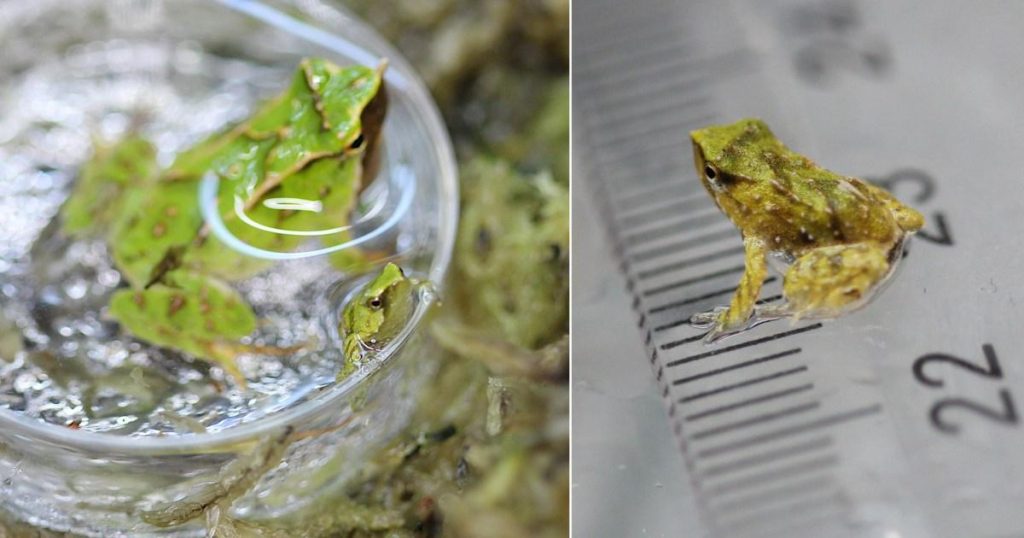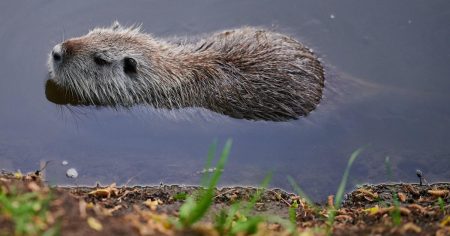A Race Against Extinction: Saving Darwin’s Frog from Chytrid Fungus
The Darwin’s frog, a diminutive amphibian named after the renowned naturalist Charles Darwin, faces an existential threat in its native Chile. The chytrid fungus, a devastating pathogen responsible for the decline and extinction of numerous amphibian species worldwide, has infiltrated the remote Parque Tantauco forests in southern Chile, the Darwin’s frog’s primary habitat. Within a year of the fungus’s arrival, monitored populations plummeted by a staggering 90%, pushing this unique species towards the brink of extinction. With the survival of the Darwin’s frog hanging precariously in the balance, conservationists initiated a daring rescue mission, transporting a group of these endangered amphibians over 7,000 miles to London Zoo, a sanctuary offering a lifeline against the fungal scourge.
The operation to relocate the frogs was a complex undertaking, demanding meticulous planning and execution. A dedicated team of conservationists journeyed to Chile, embarking on a painstaking search for the tiny creatures within their dwindling habitat. The fully grown male Darwin’s frog measures less than 3cm in length, making their detection a challenging task. Despite the difficulties, the team successfully secured 53 frogs for transport to London Zoo, where they would be housed in a biosecure environment, safe from the ravages of chytrid fungus. This rescue mission represented a crucial step in safeguarding the species, providing a beacon of hope amidst the grim reality of their dwindling numbers in the wild.
The efforts of the zoo’s amphibian specialists have been rewarded with remarkable success. Eleven of the male frogs, unique in their paternal care where they brood tadpoles in their vocal sacs, have successfully reared 33 froglets, a significant boost to the captive population and a testament to the dedication of the conservation team. This achievement signifies a landmark moment in the fight to preserve the Darwin’s frog, demonstrating the potential for successful captive breeding programs to contribute to the species’ long-term survival. The birth of these froglets provides a powerful symbol of hope, highlighting the positive impact of collaborative conservation efforts and underscoring the vital role of zoos in protecting endangered species.
The story of the Darwin’s frog rescue is not merely a tale of scientific endeavor; it is a compelling narrative of hope and resilience in the face of ecological crisis. A documentary film titled "A Leap of Hope" chronicles the arduous journey undertaken by the conservationists, capturing the urgency and importance of their mission. The film provides a captivating glimpse into the challenges and triumphs of the rescue operation, showcasing the dedication and passion of the individuals involved. It serves as a poignant reminder of the interconnectedness of life on Earth and the critical need for global cooperation to safeguard biodiversity.
The implications of the Darwin’s frog rescue extend beyond the survival of a single species. The chytrid fungus poses a global threat to amphibians, and the knowledge gained from studying and protecting the Darwin’s frog can inform broader conservation strategies. By working in partnership with Chilean conservationists, London Zoo is contributing to a global effort to understand and combat the spread of chytrid fungus, protecting other vulnerable amphibian populations worldwide. The Darwin’s frog serves as a poignant reminder of the delicate balance of ecosystems and the devastating consequences of invasive species.
The successful breeding of Darwin’s frogs at London Zoo underscores the vital role of zoos in modern conservation. They serve as arks for endangered species, providing refuge from threats like habitat loss and disease. Moreover, zoos play a crucial role in educating the public about the importance of biodiversity and the need for conservation action. The story of the Darwin’s frog, from its perilous situation in the wild to its successful reproduction in captivity, embodies the critical role zoos play in the fight against extinction, offering a powerful symbol of hope for the future of this unique and endangered species. The combined efforts of in-situ and ex-situ conservation strategies provide the best hope for the long-term survival of the Darwin’s frog and other species facing similar threats.











